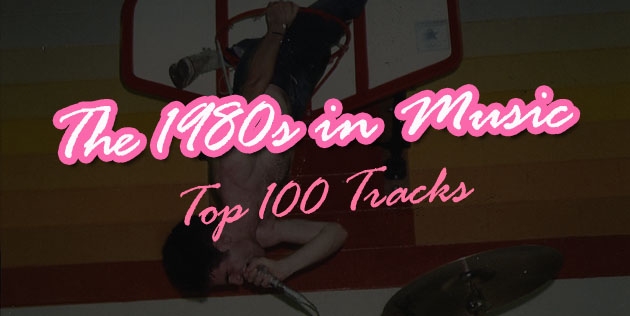
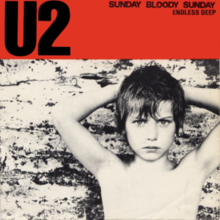
40.
U2
“Sunday Bloody Sunday”
[Island; 1983]
The striking imagery, the minimalist tone allowing the words all the space in the world to speak out, the marching drumbeat, the harsh landscape the lyrics portray; U2 say it isn’t a rebellious song, or a protest song, but it certainly comes close – to the casual observer anyway. All of Bono’s subsequent political messages don’t even come close to “Sunday Bloody Sunday”; that’s how well-written it is. The song is a lament over the troubles in Ireland, the lyrics constantly refusing to join the battle or despairing over the human cost of the troubles, the families torn apart. The description of the scene is ace too. U2 succeed in taking the listener as close to the subject matter as they can. Then there’s the music; instead of big string flourishes, there’s just The Edge being understated, unobtrusive and beautiful, making everything so evocative.
– Daniel Griffiths
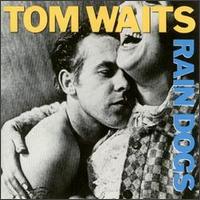
39.
Tom Waits
“Gun Street Girl”
[Island; 1985]
There’s a line in Tom Waits’ “Gun Street Girl” where he references “banging on the table with an old tin cup,” a line that astutely describes so much of the song’s charisma. While the guitar and drum work, minimal as it may be, is most impressive here, there’s the unrelenting feeling that much of the percussion used by the song is drawn from merely tapping objects against one another. Parsed over with Waits’ trademark prose, the song takes on the emotions and feel of a barrel-house session: just a man, his incredible words, and enough instrumental free-wheeling to marry it all together perfectly. “Gun Street Girl” isn’t just one of the gems of the 1980s, it’s one of the best pieces of evidence in the case for Waits as one of this country’s greatest songwriters.
– Andrew Bailey

38.
R.E.M.
“Radio Free Europe”
[Hib-Tone; 1981]
“Radio Free Europe” was the world at large’s introduction to R.E.M. as the band’s first single on Hib-Tone records, after some inaugural tours. The drive in the guitars and gruffness in Michael Stipe’s delivery is a little indebted to previous bands like The Ramones, but that’s to be expected at this stage. Mixed in with these influences are Mike Mills’ playful bass line and Peter Buck’s guitar that switches from jangly to propelling with deceptive ease, showing that this band packed some serious talent and creativity of their own.
The song was re-recorded in a cleaner and slightly slowed-down version for the band’s debut album Murmur, which is probably the better known of the two today. Fans will disagree over which is the superior take, but ultimately what makes it a great song in both versions is the melodies, the tune so catchy that you feel the urge to singalong even though the lyrics are nonsensical, and the perfect capturing of the ambition of a band so young and wide eyed, yet determined to go on to become somebodies.
– Rob Hakimian
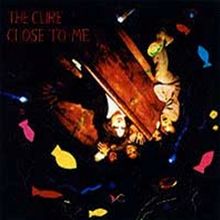
37.
The Cure
“Close To Me”
[Fuction / Elektra; 1985]
1985’s “Close To Me,” originally from the album The Head On The Door but remixed for a brass-included (and much better) version on 1986’s greatest hits collection Staring At the Sea, is a classic example of numerous memorable parts adding up to nearly unforgettable whole. Smith’s vocals are filled with longing and desperation, with his emotional shaking becoming an audible element as the song progresses. Musically, it is the handclap percussion, the dualing synthesizer lines, and the aforementioned horn explosion that turns a song that could have easily been raw and personal (and, to be honest, those elements are there, too) into a dance-club anthem. The non-lyrical elements of the song are as singable as Smith’s vocals, making the creation of a classic song seem easy, a task The Cure have done time and again in their long career
– Philip Cosores
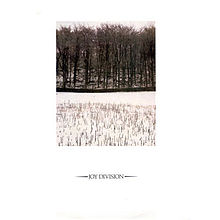
36.
Joy Division
“Atmosphere”
[Factory; 1980]
Peter Hook himself has claimed that “Atmosphere” is Joy Division’s greatest recording. The circumstances around its release and the seeming departure note from Curtis that are the lyrics mean that even if you don’t agree that it’s their greatest, you can probably admit that it’s their saddest – an equally difficult to achieve title. “Atmosphere” is striking because it places Curtis vocals so clearly and centrally, allowing you to hear every word and the way that he emotes them. The lyrics are vague, allowing for interpretation, but however you look at it, this man is clearly drowning in a sea of remorse, confusion and contradiction – feelings we have all experienced but never been able to convey like this. The sparse instrumentation gives the whole track a ghostly feeling and places even more emphasis on the message that Ian Curtis is trying to transmit. The breaks in singing allow for an emergence of beautifully strummed tinkles, which sound like a ray of light coming down from above to guide Ian away from his pain, silently into his future and are the highlight in this beautiful song.
– Rob Hakimian
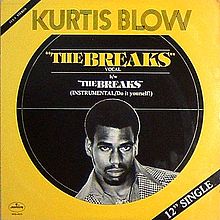
35.
Kurtis Blow
“The Breaks”
[Mercury; 1980]
Before the barrage of funk, soul, and air-raid samples later on in the decade, 1980’s “The Breaks” was recorded completely live, a feat still rarely achieved in modern hip hop, let alone 30 years ago. And whether it be about girl problems or simply things that stop, Blow’s “Breaks” is nothing short of a cathartic and jarring, a mix of Blow’s party-starting MC style and surf guitar backing. It’s uniquely rock ‘n roll for hip hop, and for a time when the latter hardly existed, “The Breaks” was a convincing effort for its legitimacy. And although it took time for the track to gain exposure outside of certain circles, only charting as high as number 87 in the States, it’s still revered as pivotal in music history.
– Erik Burg
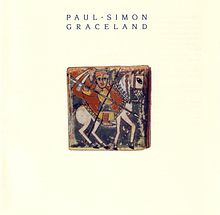
34.
Paul Simon
“Graceland”
[Warner Bros.; 1986]
Paul Simon’s Graceland spurs the vet singer-songwriters folksy roots for an eclectic mesh of bubblegum pop and South African mbaqanga. Embarking on a pilgrimage to the final resting place of Elvis Presley, the singer can’t help but recall the bloodiest schism in America’s divisive history. Country-rockers The Everly Brothers sing harmony, as Simon whispers: “I am following the river/ Down the highway/ Through the cradle of the civil war.”
With only spectral apparitions and hollow shells as company, Simon, overcome by the crippling isolation of the open highway, laments: “And my traveling companions/ Are ghosts and empty sockets/ I’m looking at ghosts and empties.” But behind the walls of The King’s castle, there’s always that promise of salvation. Amidst a cacophony of bobbing bass and snare drum rim clicks, the singer belts out a proclamation of communal redemption that would have had Elvis crying happy tears: “But I’ve a reason to believe/ We all will be received/ In Graceland.” A pilgrimage to a holy shrine of rock n’ roll: salvation awaits.
– Henry Hauser
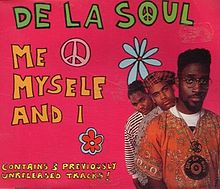
33.
De La Soul
“Me Myself and I”
[Tommy Boy; 1988]
“Can it be my de la clothes or is it just my de la song?” The 1989 single never seemed to take itself too seriously, especially as the Long Island trio sounded like they were rapping along to one of those Disney Sing-Along VHS’s, but their delivery was unmatched and the group seemed to be having fun. “Me Myself and I” is immortalized for its chorus hook though, the squeaky keys and opera-like vocals are a staple of any hip hop collection. An influential and undeniably fun track, “Me Myself and I” is the symbiosis between powerful rap like Public Enemy or N.W.A and the progressive pop music of the late 80s.
– Erik Burg
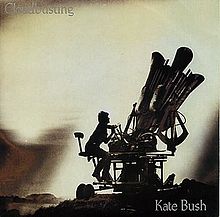
32.
Kate Bush
“Cloudbusting”
[EMI; 1985]
On the second single to emerge from Hounds of Love, Kate Bush tackles the magical relationship between a father and son. In the music video, she portrays psychologist Wilhelm Reich’s young boy, Peter, watching with excitement as the father demonstrates his cloudbuster prior to being arrested. This invention was designed according to pseudoscientific principles of orgone theory to produce rain for practical applications like in time of drought. This is alluded to in the lyrics: “I still dream of Orgonon / I wake up crying,” the song begins, referencing the 160-acre home, laboratory, research center – and later, burial place – of Reich. Strings sweep the track like a hang glider in heavy wind, only to be joined by militant drums as Kate Bush leads a vocal chorus to holler out the thrilling conclusion.
– Michael Tkach
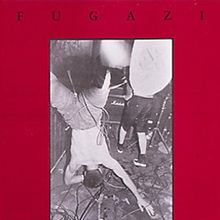
31.
Fugazi
“Waiting Room”
[Dischord; 1988]
“Come on and get up!” goes Guy Picciotto’s call to action. Arguably Fugazi’s defining moment, “Waiting Room” provided the foundation for the band to sustain a healthy, lucrative career for over a decade despite Ian MacKaye’s track record of quick-to-dissolve former groups: Minor Threat and Embrace, not to mention that he recorded Rites of Spring’s debut. Joe Lally’s dub-dipped bassline is instantly recognizable, leading us to the initial gritting guitar before the trap door to suspenseful silence opens at the 22-second mark. Unsurprisingly, the silence is quickly quelled, thrusting us toward the D.C. post-hardcore band’s punishing chorus. In the coming years, Fugazi would catapult from their early groundwork to grander statements, most notably on Red Medicine. But the late ‘80s – and specifically, “Waiting Room” – solidified Fugazi’s status as world-hopping musical purveyors of the highest degree.
– Michael Tkach

